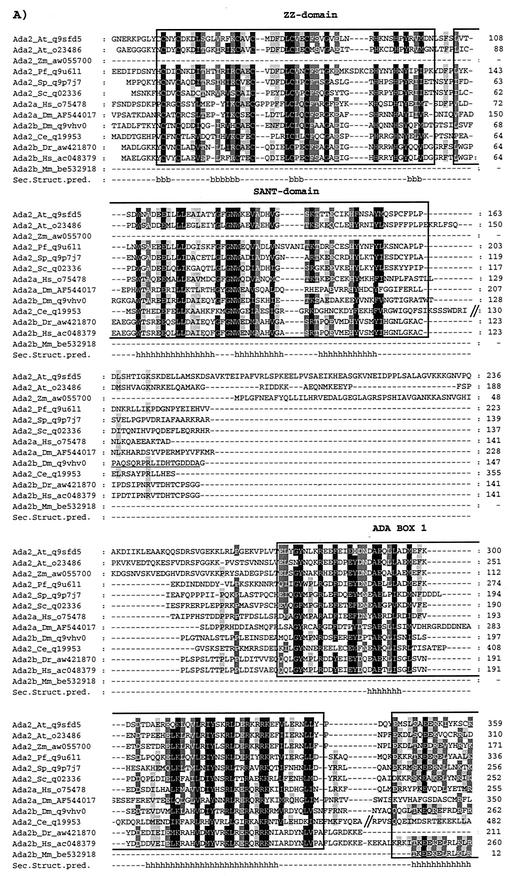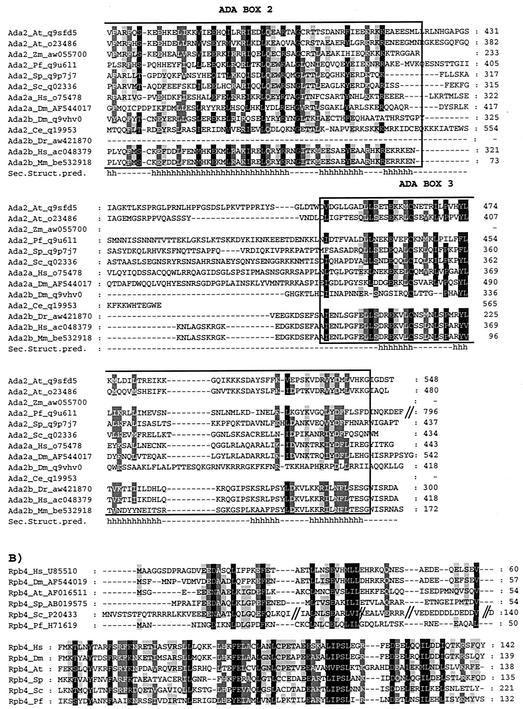FIG. 2.
The novel dADA2s and dRPB4 are evolutionarily well conserved. ADA2 (A) and RPB4 (B) amino acid sequences from various species were extracted from the GenBank, EMBL, DDBJ, and Genome Sequencing Center databases by iterative searches using the PSI-BLAST program and hADA2a or yRPB4 as query. The one-letter amino acid code is used. The different ADA2 sequences are as follows: A. thaliana (At) (accession no. q9sfd5 and o23486), Z. mays (Zm) (accession no. aw055700), P. falciparum (Pf) (accession no. q9u611), S. pombe (Sp) (accession no. q9p7j7), S. cerevisiae (Sc) (accession no. q02336), H. sapiens (Hs) ADA2a (accession no. o75478), D. melanogaster (Dm) ADA2a (accession no. AF544017), D. melanogaster (Dm) ADA2b (accession no. q9vhv0), C. elegans (Ce) (accession no. q19953), D. rerio (Dr) (accession no. aw421870), H. sapiens (Hs) ADA2b (accession no. ac048379), M. musculus (Mm) (accession no. be532918). Residues with the same physicochemical properties conserved among the different ADA2 homologues at between 100 and 91% have a black background, those conserved at between 90 and 76% have a dark gray background, and those conserved at between 75 and 60% have a light gray background. The highly conserved ZZ and SANT domains are boxed. The amino acid positions in the different proteins are labeled on the left in the sequences represents the deletion of a nonconserved region in the corresponding protein. In panel A, the nonconserved N-terminal end of certain ADA2 factors is not represented. The conserved secondary structures predicted (Sec. Struct. Pred.) for the ADA2 proteins are labeled such that the positions of the α-helices (h) and the β-strands (b) are shown under the sequences. The amino acid sequence in dmADA2b that was used to generate the anti-dADA2b PAbs is underlined.


